By Alex Trukan
It can be often witnessed when a team plays the ball endlessly between the centre backs and across the back line. Fans often associate this situation with a boring moment of the game and encourage the team to play forwards earlier. However, there is often a purpose to this patience way of building up play. Some teams use it strategically as a conditioning tool allowing lower intensity periods between high intensity work (i.e. after transitions). It would also occur naturally in case there are no available players in front of the ball or when the opposition drops deeper into their own half. Teams might use it tactically to create more options to play forwards or drag the opposition into certain areas. It would be therefore very useful to look beyond the obvious of how the ball circulation across the back line can be used.
The possibility of patience circulation of the ball and a type of build up through the back line will be largely dependent on the pressing employed by opposition. However, on the other hand, the type of opposition’s pressing can be influenced by the way of build-up. For example, if the opposition drops deeper, the team in possession might stay closer to the own goal and circulate the ball across the back line which will create tension and force the opposition to come up higher and press. This will in turn leave spaces in behind.
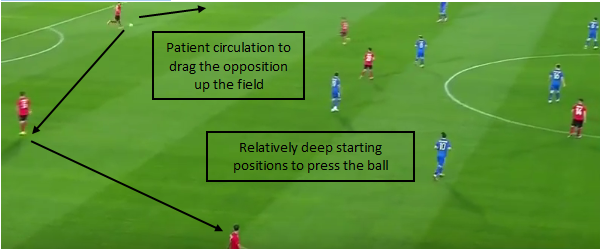
Moving the ball horizontally across the back line, will shift the opposition units. Shifting opposition’s strikers’ unit might create spaces in between as well as around them. This will in turn help the team to play forwards into midfielders and further into strikers.
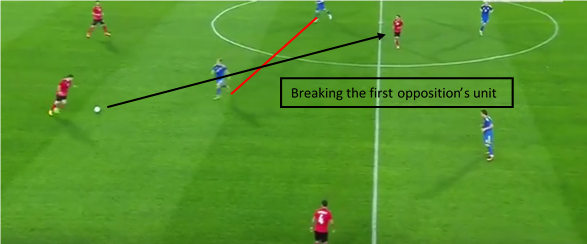
Playing between two centre backs can also drag single players ot of position. Strikers are likely to press individually and not as a unit what will create gaps in behind them and make playing through easier. The key for centre backs is to recognise the moment when to play forwards.
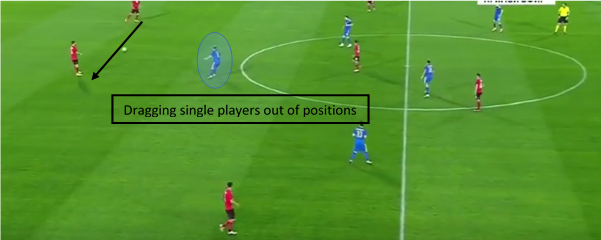
Circulating the ball across the back line also might help to create gaps around opposition’s midfield unit. Playing the ball to the full backs positioned wide will trigger opposition’s wide midfielders movement what can then help to play through on the opposite side or through the middle.
[wpsharely id="2988"][/wpsharely]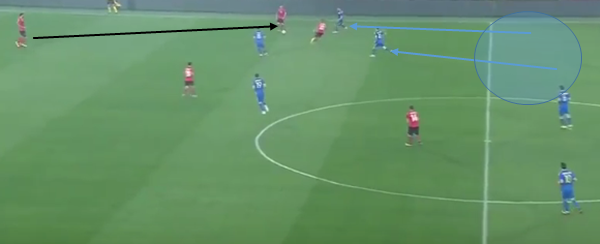
Playing the ball back to the defensive unit and circulating it horizontally also gives other players time to regroup and get into starting positions. This can be especially useful after a longer period of constant transitions, after which an attacking team wants to settle the game down and employ more patient, positional attack.
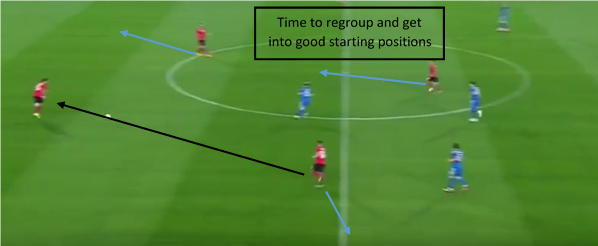
The key to make sure the ball can be played backwards and the tempo slowed down is to have a certain degree of depth available. This means having centre backs always behind the ball and free to receive the ball in case it can’t be played forwards.
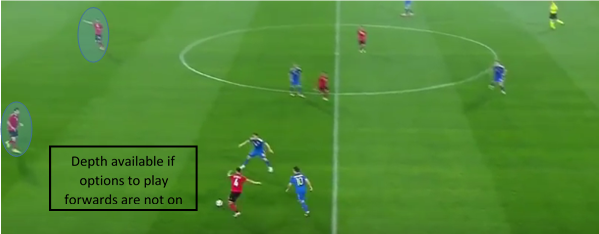
Playing the ball constantly across the back unit does not serve as a useful strategy. It is the key to recognise when to play backwards and across the defenders and when to quickly play forwards. Important aspect of it is the psychological side as centre backs will feel pressure to play forwards after some time playing sideways. This cannot distract them and negatively affect their decision making.
By Alex Trukan, Development Coach, Nottingham Forest
@AlexTrukan


